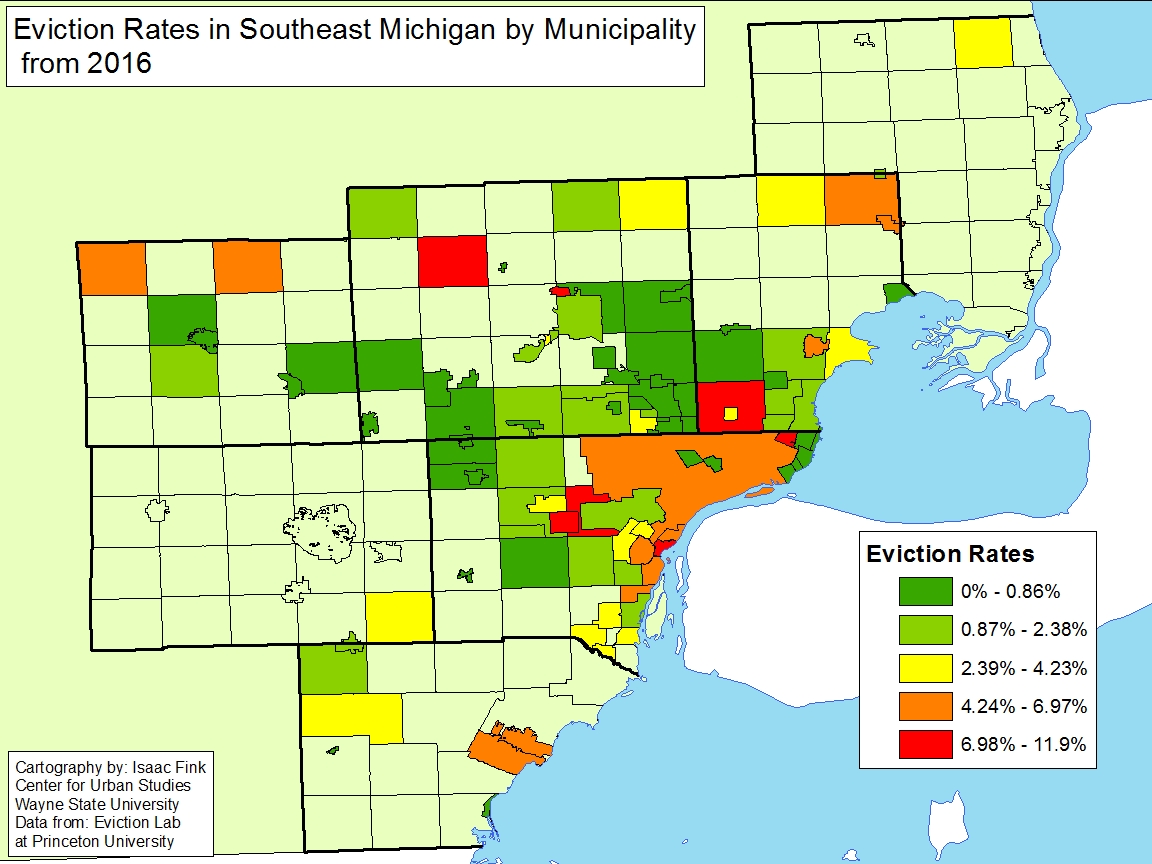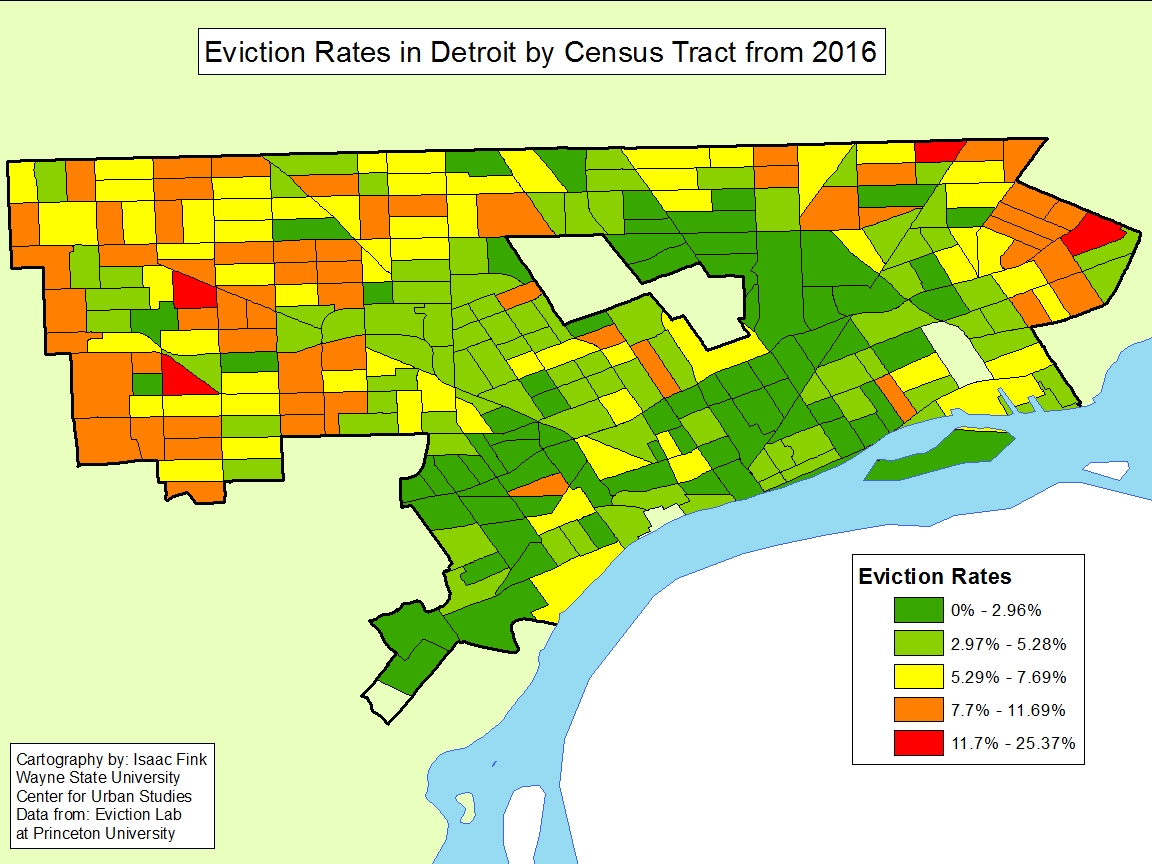In 2016, the City of Harper Woods just northeast of Detroit, had the highest eviction rate in Southeastern Michigan, according to Eviction Lab. Eviction Lab is a nationwide data base created by Princeton University that shows formal evictions that have taken place throughout the country; these formal evictions are ones that occurred through the court system. In Harper Woods, the eviction rate was 9.9 percent per 100 rental units; this was equivalent to 175 formal evictions in 2016. The City of Dearborn Heights, which is just west of the City of Detroit, had an eviction rate of 9.82 percent per 100 rental units, which was equivalent to 502 total evictions.
The Top 5 Eviction Rates (per 100 rental units) in Southeastern Michigan by City were:
- Harper Woods: 9.9
- Dearborn Heights: 9.82
- Bellevue 9.44
- Ecorse: 9.29
- Inkster: 8.18
No data was available for the townships in the above map with the very light green.
While inner-ring suburbs ranked the highest for eviction rates in Southeastern Michigan, the City of Detroit had the most evictions in terms of sheer volume. In total, there were 6,664 formal evictions in the City of Detroit in 2016; this was equivalent to an eviction rate of 5.2 percent per 100 rental units.
When examining eviction rates at a Census Tract level in Detroit, the data shows that there were only four Census Tracts with eviction rates above 11 percent. Two of these Census Tracts were located on the City’s west side and the other two were located on the far east side of the City. The majority of the central part of Detroit, and into Southwest Detroit, did not have formal eviction rates above 5.3 percent in 2016, according to the data. The west of the City had the highest concentration of formal eviction rates above 7.7 percent.
Understanding eviction rates for the City of Detroit, and the region, is important because this data further demonstrates how income inequality affects the citizens of Southeastern Michigan. Evictions occur when a rental tenant is involuntary removed from his or her home. Evictions can occur due to the tenant’s inability to pay rent, along with reasons such as property damage and taking on boarders. Clearly though, there is a relationship between income and evictions. For low-income families, a single monetary emergency can mean a missed rent payment, and ultimately eviction. As can be seen in the first map, many of the cities in Southeastern Michigan with a 0 percent eviction rate are those with higher than average median incomes, such as Bloomfield Hills and Birmingham. Detroit, Ecorse and Inkster are among the cities in Southeastern Michigan that do not have such socioeconomic characteristics. Rather, Detroit, Ecorse and Inkster have among the lowest median incomes in the region and some of the highest eviction and poverty rates.
This discussion on eviction rates will certainly be part of our overall poverty review of Southeastern Michigan, which will also examine median incomes, poverty rates, homeowner status and education levels.
To understand the dynamics and consequences of eviction for the poor, see: Evicted: Poverty and Profit in the American City by Matthew Desmond.

